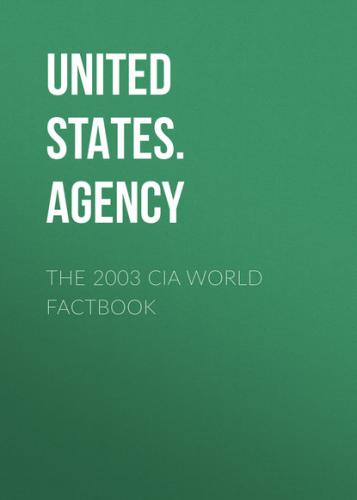Telephones - main lines in use
This entry gives the total number of main telephone lines in use.
Telephones - mobile cellular
This entry gives the total number of mobile cellular telephones in use.
Television - broadcast stations This entry gives the total number of separate broadcast stations plus any repeater stations.
Terminology Due to the highly structured nature of the Factbook database, some collective generic terms have to be used. For example, the word Country in the Country name entry refers to a wide variety of dependencies, areas of special sovereignty, uninhabited islands, and other entities in addition to the traditional countries or independent states. Military is also used as an umbrella term for various civil defense, security, and defense activities in many entries. The Independence entry includes the usual colonial independence dates and former ruling states as well as other significant nationhood dates such as the traditional founding date or the date of unification, federation, confederation, establishment, or state succession that are not strictly independence dates. Dependent areas have the nature of their dependency status noted in this same entry.
Terrain
This entry contains a brief description of the topography.
Total fertility rate This entry gives a figure for the average number of children that would be born per woman if all women lived to the end of their childbearing years and bore children according to a given fertility rate at each age. The total fertility rate is a more direct measure of the level of fertility than the crude birth rate, since it refers to births per woman. This indicator shows the potential for population growth in the country. High rates will also place some limits on the labor force participation rates for women. Large numbers of children born to women indicate large family sizes that might limit the ability of the families to feed and educate their children.
Transnational Issues This category includes only two entries at the present time - Disputes - international and Illicit drugs - that deal with current issues going beyond national boundaries.
Transportation This category includes the entries dealing with the means for movement of people and goods.
Transportation - note This entry includes miscellaneous transportation information of significance not included elsewhere.
Unemployment rate This entry contains the percent of the labor force that is without jobs. Substantial underemployment might be noted.
Waterways This entry gives the total length and individual names of navigable rivers, canals, and other inland bodies of water.
Years All year references are for the calendar year (CY) unless indicated as fiscal year (FY). The calendar year is an accounting period of 12 months from 1 January to 31 December. The fiscal year is an accounting period of 12 months other than 1 January to 31 December.
Note: Information for the US and US dependencies was compiled from material in the public domain and does not represent Intelligence Community estimates.
This page was last updated on 23 October, 2003
=====================================================================
A Brief History of Basic Intelligence and The World Factbook
The Intelligence Cycle is the process by which information is acquired, converted into intelligence, and made available to policymakers. Information is raw data from any source, data that may be fragmentary, contradictory, unreliable, ambiguous, deceptive, or wrong. Intelligence is information that has been collected, integrated, evaluated, analyzed, and interpreted. Finished intelligence is the final product of the Intelligence Cycle ready to be delivered to the policymaker.
The three types of finished intelligence are: basic, current, and estimative. Basic intelligence provides the fundamental and factual reference material on a country or issue. Current intelligence reports on new developments. Estimative intelligence judges probable outcomes. The three are mutually supportive: basic intelligence is the foundation on which the other two are constructed; current intelligence continually updates the inventory of knowledge; and estimative intelligence revises overall interpretations of country and issue prospects for guidance of basic and current intelligence. The World Factbook, The President's Daily Brief, and the National Intelligence Estimates are examples of the three types of finished intelligence.
The United States has carried on foreign intelligence activities since the days of George Washington but only since World War II have they been coordinated on a government-wide basis. Three programs have highlighted the development of coordinated basic intelligence since that time: (1) the Joint Army Navy Intelligence Studies (JANIS), (2) the National Intelligence Survey (NIS), and (3) The World Factbook.
During World War II, intelligence consumers realized that the production of basic intelligence by different components of the US Government resulted in a great duplication of effort and conflicting information. The Japanese attack on Pearl Harbor in 1941 brought home to leaders in Congress and the executive branch the need for integrating departmental reports to national policymakers. Detailed and coordinated information was needed not only on such major powers as Germany and Japan, but also on places of little previous interest. In the Pacific Theater, for example, the Navy and Marines
